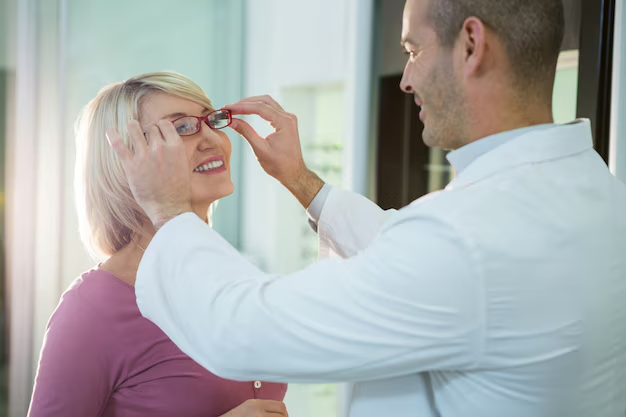How Cataract Surgery May Change the Appearance of Your Eyes
Cataract surgery is a common procedure that many people undergo to improve their vision. Yet, for those preparing for the surgery, a common question arises: Will my eyes look different after cataract surgery? This question isn't just about aesthetics; it touches upon concerns about self-image, healing, and health. In this article, we'll explore the nuances of cataract surgery and what changes, if any, you might notice in the appearance of your eyes.
What Happens During Cataract Surgery?
To understand any potential changes in eye appearance, it's important first to comprehend what cataract surgery entails. During the procedure, the clouded lens of the eye, known as a cataract, is removed and replaced with a clear artificial lens. This lens is typically made of plastic or silicone and is designed to restore clear vision.
The Surgical Process
Preparation: The eye is numbed with anesthesia. You may remain awake, but comfortable, throughout the procedure.
Removal: A small incision is made in the eye, through which the clouded lens is carefully removed.
Replacement: An intraocular lens (IOL) is inserted in place of the natural lens, often without the need for stitches.
Recovery: The incision is self-sealing, and recovery typically begins immediately, with most patients resuming normal activities within a few days.
Immediate Effects of Surgery
Initial Swelling and Redness
Immediately following surgery, many patients experience some degree of swelling and redness. These effects are generally temporary and diminish as the eye heals.
Swelling: This is a natural response to surgery and the eye's self-healing processes. It usually subsides within a few days.
Redness: Caused by blood vessel irritation, the redness also fades with time.
Pupil Changes
Some patients notice their pupil may appear larger or uneven immediately after surgery. This is often a temporary consequence of the medications used during surgery and generally normalizes quickly.
Crystal Clear Vision and Noticeable Clarity
One exciting effect of cataract surgery is the noticeable improvement in vision clarity, which can make eyes appear brighter. The contrast between the post-surgery and pre-surgery vision can create a perception of 'newness' or sharpness.
Longer-Term Changes
Eye Color and Appearance
Cataract surgery itself does not change the natural color of your eye. However, clearer vision and brighter eyes might give the impression of subtle changes due to improved eye health and vitality.
Iris Shape and Light Reflection
Reflection: With the absence of the cataract, light reflects more accurately off the surface of your eye, enhancing its appearance.
Shape: The shape or structure of the iris doesn't change, although any perceived differences in appearance are due to improved vision quality rather than structural alterations.
Comfort and Tear Production
Some patients report improved comfort in their eyes after adjusting to the IOL, with tear production returning to normal levels. This can lead to less dryness and a more relaxed appearance.
Potential Complications
While rare, certain complications can affect eye appearance:
Posterior Capsule Opacification (PCO): Sometimes referred to as a 'secondary cataract,' this can create a cloudy lens appearance again. It is usually treatable with a simple laser procedure.
Dislocation of IOL: An uncommon occurrence where the lens shifts from its position, potentially requiring additional procedures.
Managing Expectations and Comfort
Psychological Impact
The psychological effects of changing eye appearance and enhanced vision can also lead to changes in self-perception, often boosting confidence. Understanding and setting realistic expectations can help patients better prepare for and adapt to these changes.
Communicating with Your Surgeon
Pre-Surgery Discussions: Talk with your surgeon about any aesthetic concerns. They can offer reassurance based on your specific case and experience.
Post-Surgery Check-ups: Regular check-ups are essential to monitor healing and address any concerns regarding eye appearance.
Practical Tips Post-Surgery 🌟
Here are some tips to manage your eyes’ healing process and ensure you feel comfortable with any changes:
👁️ Rest Your Eyes: Minimize screen time and reading immediately after surgery to avoid strain.
💧 Hydrate and Moisturize: Use recommended eye drops diligently to prevent dryness and ease discomfort.
🕶️ Protect Your Eyes: Wear sunglasses outdoors to protect against glare and UV rays.
🩺 Attend Follow-Up Appointments: Crucial for monitoring progress and addressing issues promptly.
Key Takeaways
Temporary Effects: Expect initial swelling and redness post-surgery, which are transient.
Vision Clarity: Enhanced vision may make eyes appear brighter and more vibrant.
Natural Eye Color: Cataract surgery does not change the natural eye color.
Patient Communication: Essential to discuss expectations with your surgeon and maintain regular follow-ups for optimal results.
Understanding these aspects of cataract surgery can help you confidently pave the way for improved vision and maintain a positive outlook on any perceived changes. Embrace the clarity and enjoy the journey to better sight!
